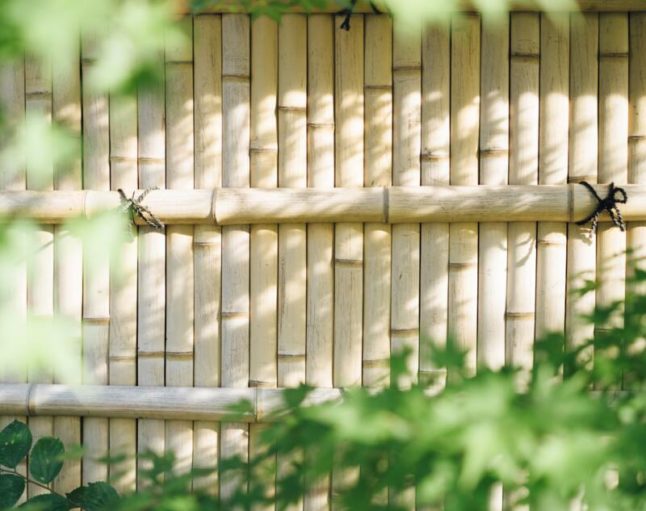All Categories
Featured

Your fence is a vital component of your building, supplying aesthetic, personal privacy, and protection allure. It is regularly revealed to the aspects, and over time, weather-related damage can take its toll. Whether it's the harsh sunlight, solid winds, heavy rain, or freezing temperature levels, the climate can cause wear and tear, bending, deteriorating, and fading. Fortunately, there are a number of strategies you can apply to protect your fence and prolong its life.
- Pick the Right Material. The primary step in protecting your fence from weather-related damages is to choose the best product for your climate. Some products are a lot more immune to the components than others.
Wooden Fencings: While conventional wooden fences offer an all-natural, eye-catching appearance, they are specifically vulnerable to water parasite, rot, and damage problem. Such as cedar or redwood if you select timber, choose pressure-treated lumber or wood kinds that are a lot more resistant to wetness. Vinyl Fences: Vinyl is a low-maintenance alternative that withstands fading, splitting, and warping. It's also unsusceptible to rot and insects, making it optimal for locations with high moisture or exposure to rain. Steel Fences: Aluminum and wrought iron fencings are long lasting and immune to weathering. However, they can corrosion if subjected to moisture for extended periods. Choose a galvanized or powder-coated metal fencing to minimize the risk of rust. Composite Fences: These are made from a blend of timber fibers and plastic, offering the most effective of both worlds-- resilience and an all-natural appearance. Composite fences are immune to wetness, fading, and decaying, making them great for climates with regular rainfall or snow. 2. Apply Protective Coatings. Despite the material, applying a protective layer can help safeguard your fencing from weather condition damages.

Wooden Fences: A good-quality discolor or sealant can help protect your wood fence from dampness, UV rays, and pests. These layers create an obstacle that prevents water from seeping into the timber and causing rot. You ought to use a fresh layer of sealer every pair or discolor of years, depending upon your climate and the degree of exposure to rain and sunlight. Vinyl Fences: Although plastic fencings are normally immune to weathering, they can still suffer from discoloration due to the sunlight's UV rays. You can make use of specific plastic cleansers or UV protectants to maintain the color and appearance of your fence. Metal Fences: For metal fencings, consider applying a rust-resistant primer and a layer of paint developed for outdoor usage. Powder finish is an additional exceptional alternative for steel fencings, as it develops a durable, weather-resistant coating that resists corrosion and corrosion. 3. Normal Cleaning and Upkeep. Maintaining your fence consistently is important to preventing damages from the components. Dust, leaves, and other debris can accumulate on your fencing, which can cause discoloration, mold, and mold with time.
Wood Fencings: Tidy your wood fencing every 6 months with a light detergent remedy or a stress washing machine (on a low setting) to eliminate dust and gunk. Watch out for early signs of rot, especially at the base of the fencing articles where dampness tends to build up. Plastic Fencings: Plastic fencings are very easy to tidy with soap and water. Utilize a mixture of vinegar and water to delicately scrub the affected areas if you observe mold or mildew. Avoid extreme chemicals that could harm the surface area. Steel Fences: Frequently tidy steel fences with a soft towel or sponge to remove rust-causing particles. For functioned iron fences, take into consideration applying a rust-inhibiting item to stop corrosion. 4. Proper Installment and Positioning. Correct setup of your fence can go a long way in protecting it from weather-related damages. Make certain that your fencing is securely anchored and that messages are established deep enough into the ground to stop changing throughout heavy winds or storms. If your fence undergoes heavy winds, mounting supporting at bottom lines can give extra assistance.
In addition, consider the positioning of your fence. Preferably, plant bushes or trees tactically around your fencing to offer some all-natural protection from extreme winds, extreme sunshine, or driving rain. Be careful not to plant also close to the fencing, as roots can damage or shift posts over time.
- Address Tornado Damages Quickly. Storms, especially those with high winds or hailstorm, can trigger instant damage to your fencing. After a storm, examine your fence for broken sections, leaning articles, or fallen particles.
- Winterize Your Fence. Cold temperatures and ice can be specifically damaging to wood fencings. To avoid this, make sure that the base of your fence blog posts is elevated and not sitting in pooled water.
Conclusion. Weather-related damages is an unpreventable part of having a fencing, however with the right precautions and normal maintenance, you can considerably prolong the life of your fence. Pick long lasting materials fit for your climate, apply safety coatings, clean regularly, and ensure correct installation. With these steps, you can safeguard your fencing from the elements and keep its appearance and functionality for many years to come.
Latest Posts
Check Out Brake Repair & More: Comprehensive Auto Care Solutions from Montclare Auto Repair
Published May 28, 25
1 min read
Unlock WyHy Federal Credit Union – Wyoming’s Best Banking Choice for Your Money Goals
Published May 26, 25
1 min read
Join Your Financial Partner at WyHy – Top Benefits for Your Goals
Published May 25, 25
1 min read
More
Latest Posts
Check Out Brake Repair & More: Comprehensive Auto Care Solutions from Montclare Auto Repair
Published May 28, 25
1 min read
Unlock WyHy Federal Credit Union – Wyoming’s Best Banking Choice for Your Money Goals
Published May 26, 25
1 min read
Join Your Financial Partner at WyHy – Top Benefits for Your Goals
Published May 25, 25
1 min read